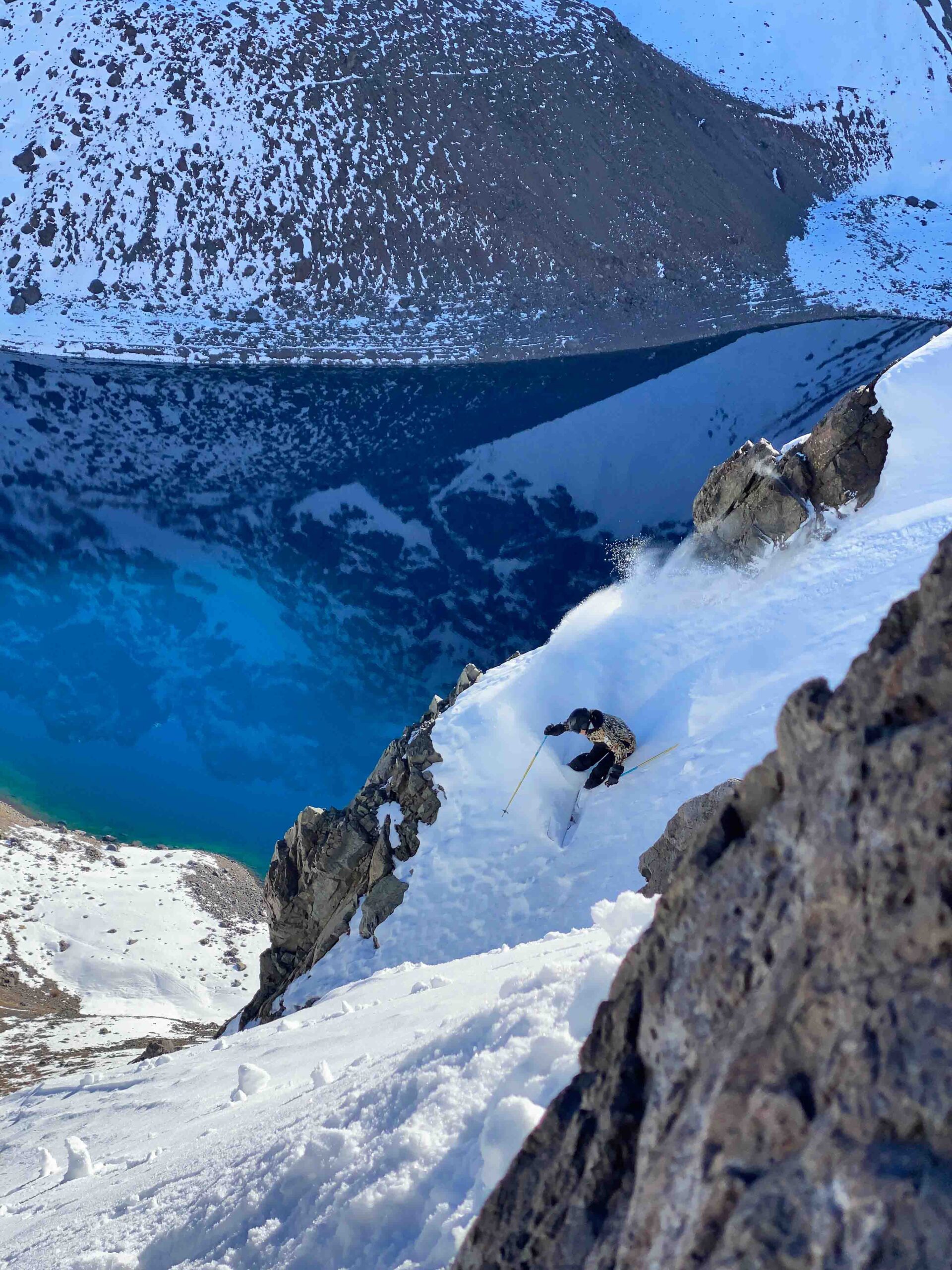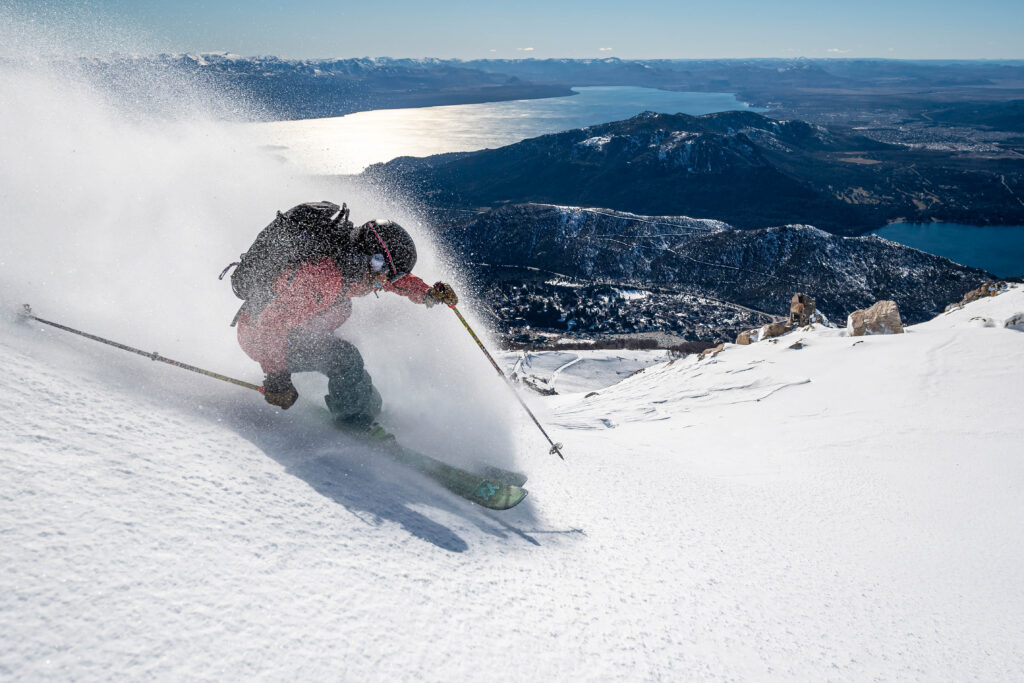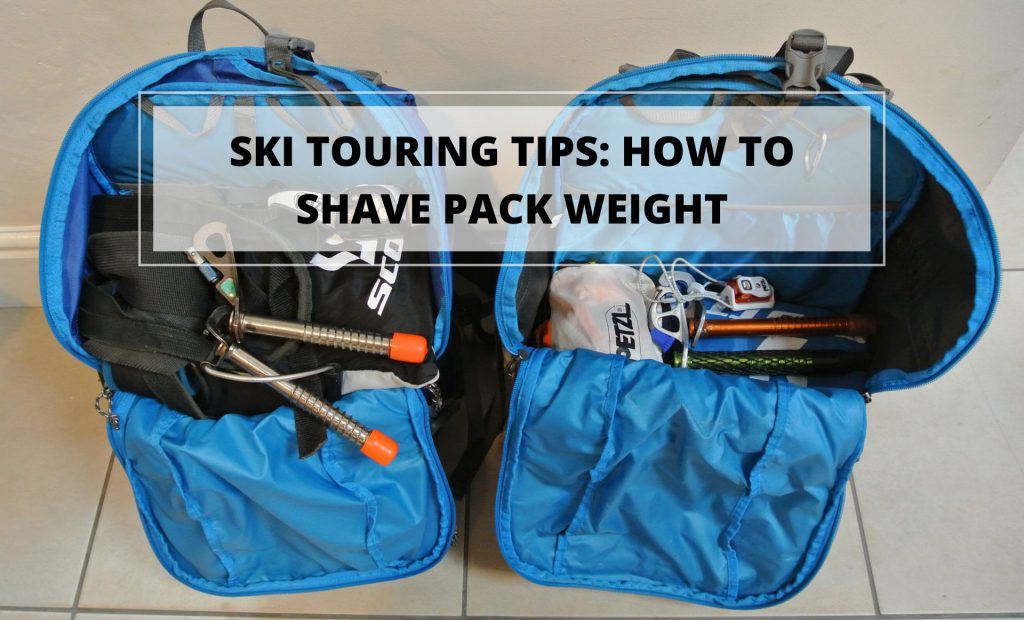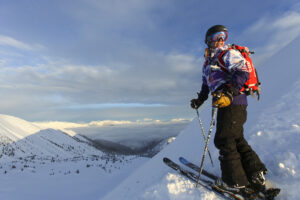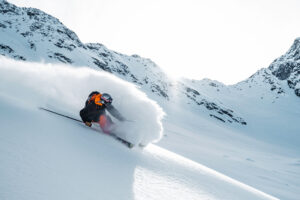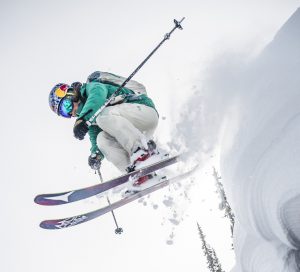Fall Line’s trusted blogger Ingrid Backstrom is a professional big mountain freeskier and The North Face athlete, so she knows a thing or two about gear.
Whenever I stop to think about the amount of gear I regularly don in order to go skiing, it seems both necessary yet excessive, and archaic yet futuristic, like I’m an astronaut about to embark on a moonwalk in the early days of space exploration.
Infinite iterations of design, engineering, research and development have gone into each piece of gear I’m wearing, from my helmet (with MIPS), to my goggles (Carl Zeiss lenses, anti-fog), to my skis (layers and layers of wood, metal, plastic, carbon and adhesives, to name a few).
In between there’s my jacket and bibs (waterproof, breathable, two-way stretch), wool baselayers, ski boots (injection-moulded, 130 flex) – oh, and my rechargeable airbag backpack and avalanche gear (transceiver, shovel, probe). And don’t forget the climbing skins, carbon collapsible poles, and designer snacks.
Does it seem ridiculous yet?
When I put it like that, yes. And also, it’s just a normal part of being a skier. The reason I like to think about gear like this is that I do not take this gear for granted. I have a hierarchy that helps me prioritise, care for, and choose exactly what I need for each day, season to season.
Skiing is a gear-intensive sport; it helps me to think about it in a rational way for maximum enjoyment and minimum overwhelm.
1. Function first
No matter what, the gear has to work best-in-category for how I plan to use it. The best lesson I learned early on was when I was competing in freeskiing contests. I had my first pair of skis (Völkl Explosivs) that I had bought myself, and another brand gave me two pairs of free skis to try – ahem, humble brag, my first sponsorship!
I was so excited, until I dropped into an icy contest run and nearly rattled my teeth out chattering down the slope on the floppy new sticks.
Lesson learned: free sh*t is cool but only if it’s good free sh*t! I gave the skis back and went back to my own pair.
2. Boots matter most
Of all the things I put the most effort into researching, trying, fitting and breaking in, it’s my ski boots. Ski boots make or break a ski day. They are your warmth and comfort and, more importantly, they are what transfers the energy and movement from your body to the ski. They have the most effect of any piece of equipment on how you can ski, in my experience.
I want my boots tight but not squeezing, and I unbuckle and buckle them most runs, giving my feet a little extra circulation on the chairlift or while hiking. I use two pairs – one for backcountry touring and one for resort skiing, since I use different bindings for each.
3. Pare down the quiver
For me to focus on my skiing, it helps to keep my equipment the same as much as possible. I just admitted I use two setups, but I try to keep it to that. I have one setup of boots, skis and bindings that I use most days, for resort and bootpack hiking (Völkl Katana 108, Marker Jester Pro, Dalbello DRS130).
When I reduce the amount of variables I’m changing on a regular basis, I am able to better tune in to my own skiing.
Then I have another setup I use mainly for backcountry, so it feels a bit different underfoot, but I am generally skiing different terrain when I am touring anyway, so it allows me to again focus on my own self and not the equipment.
4. One outfit, many layers
I take a similar approach when it comes to my outerwear and layers; I mainly have the same outfit that I put on everyday and then I vary the layers underneath depending on conditions.
I wear bibs (I started wearing them while pregnant, for belly comfort, and then discovered how comfortable, warm and mountain pee-friendly they are, and have never looked back) and a shell every day.
And since I live in the cold, wet Pacific Northwest, I need something high quality, waterproof and breathable, with excellent breathability for lots of hiking. I wear The North Face Verbier GTX Jacket and Bib, and then I wear a synthetic, hooded down layer underneath for cold days (or riding lifts) that I remove for hiking or spring days.
I like to dial in my gear and keep it low maintenance so that my skiing can be high maintenance
5. Look good, feel good, ski good
When I suit up, I want to feel badass, but not too attention-grabbing; feminine but hard-charging; and fashionable but only after my function bases have been solidly covered.
I like outerwear in mostly solid, neutral colours and then I accessorise with pops of colour from my neck gaiter, goggles, gloves and hat. When I know my outfit looks good and feels comfortable, it again lets me just focus on skiing, which is the whole point.
Are you sensing a theme here? I like to dial in my gear and keep it low maintenance so that my skiing can be high maintenance.
6. Think in systems & train for success
The more I can have each part of my daily ski routine in a system, the more I can stick to that systematic routine, and the more I set myself up for success.
Packing my backpack? I do it the same way, every time, so I know where everything is and I’m less likely to forget something important.
Loading up the car? Skis and poles first, then boots, then bag of helmets, goggles and gloves. At least that’s how I aim to do it anyway; I’ve gotten distracted and forgotten my ski boots on the way to the mountain an embarrassing number of times.
I turn my beacon on when I put my ski boots on, and I turn it off when I take them off. The more I make things automatic, the less likely I am to fudge something important. I tell myself, just do it right every time and then I don’t have to worry about it! Which is easier said than done, but a girl can try.
❄Ingrid is sponsored by The North Face


